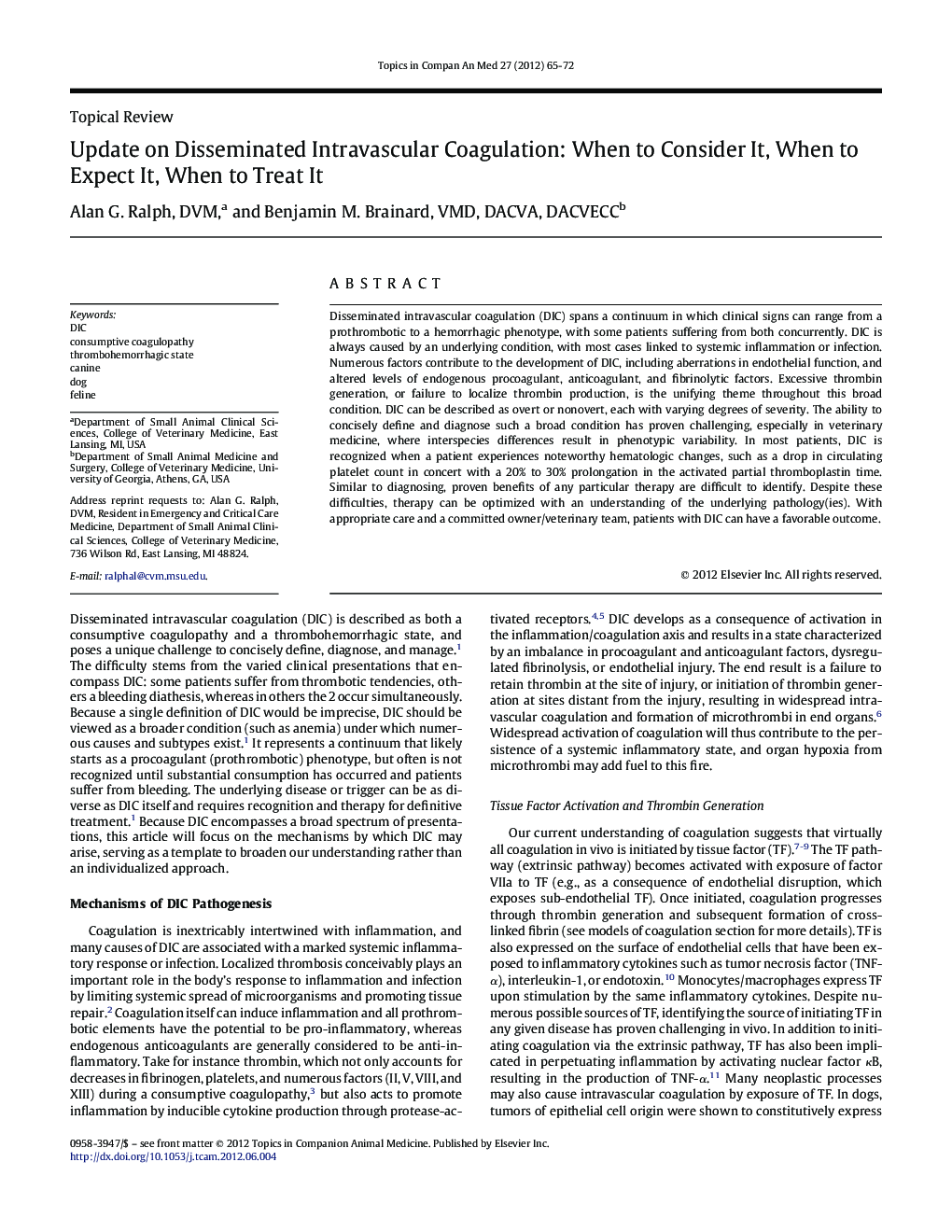| Article ID | Journal | Published Year | Pages | File Type |
|---|---|---|---|---|
| 2401260 | Topics in Companion Animal Medicine | 2012 | 8 Pages |
Disseminated intravascular coagulation (DIC) spans a continuum in which clinical signs can range from a prothrombotic to a hemorrhagic phenotype, with some patients suffering from both concurrently. DIC is always caused by an underlying condition, with most cases linked to systemic inflammation or infection. Numerous factors contribute to the development of DIC, including aberrations in endothelial function, and altered levels of endogenous procoagulant, anticoagulant, and fibrinolytic factors. Excessive thrombin generation, or failure to localize thrombin production, is the unifying theme throughout this broad condition. DIC can be described as overt or nonovert, each with varying degrees of severity. The ability to concisely define and diagnose such a broad condition has proven challenging, especially in veterinary medicine, where interspecies differences result in phenotypic variability. In most patients, DIC is recognized when a patient experiences noteworthy hematologic changes, such as a drop in circulating platelet count in concert with a 20% to 30% prolongation in the activated partial thromboplastin time. Similar to diagnosing, proven benefits of any particular therapy are difficult to identify. Despite these difficulties, therapy can be optimized with an understanding of the underlying pathology(ies). With appropriate care and a committed owner/veterinary team, patients with DIC can have a favorable outcome.
